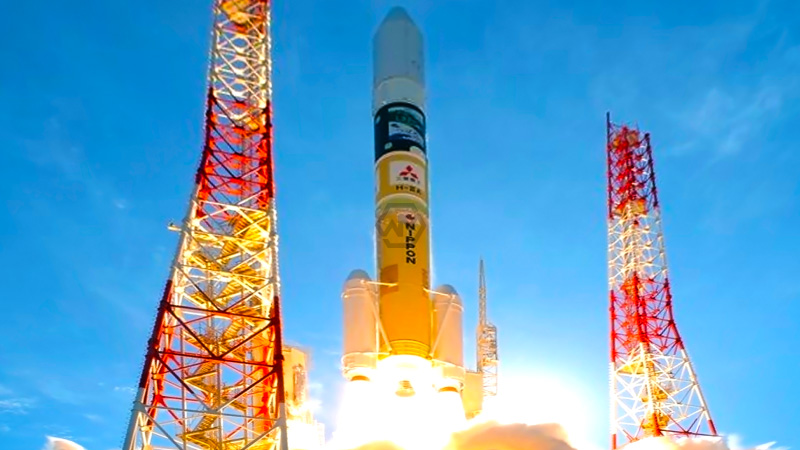- The move comes when the world is again going to the test of going to the moon.
- Just four countries have effectively arrived on the moon, the U.S., Russia, China, and India.
- Last month, India handled a shuttle close to the moon’s south pole.
Japan sent off a rocket Thursday conveying an X-beam telescope that will investigate the beginnings of the universe as well as a little lunar lander.
The send-off of the HII-A rocket from Tanegashima Space Center in southwestern Japan was displayed on live video by the Japan Aviation Investigation Organization, known as JAXA.
Japan Launches HII-A Rocket
“We have a takeoff,” the storyteller at JAXA said as the rocket flew up in an eruption of smoke and then flew over the Pacific.
Thirteen minutes after the send-off, the rocket put into space around Earth a satellite called the X-Beam Imaging and Spectroscopy Mission, or XRISM, which will quantify the speed and cosmetics of what lies between systems.
That data helps in concentrating on how divine articles were framed, and ideally can prompt settling the secret of how the universe was made, JAXA says.
In participation with NASA, JAXA will check out the strength of light at various frequencies, the temperature of things in space, and their shapes and splendor.
David Alexander, overseer of the Rice Space Foundation at Rice College, accepts the mission is critical for conveying knowledge into the properties of hot plasma, or the superheated matter that makes up a large part of the universe.
Plasmas can be utilized in different ways, including recuperating wounds, making central processors, and cleaning the climate.
Likewise on board, the most recent Japanese rocket is the Brilliant Lander for Examining Moon, or Thin, a lightweight lunar lander.
The Savvy Lander won’t make a lunar circle for three or four months after the send-off and would probably endeavor an arrive right on time one year from now, as per the space organization.
JAXA is creating “pinpoint landing innovation” to get ready for future lunar tests and arriving on different planets.
While arrivals currently will generally be off by around 10 kilometers (6 miles) or more, the Brilliant Lander is intended to be more exact, inside around 100 meters (330 feet) of the planned objective, JAXA official Shinichiro Sakai told correspondents in front of the send-off.
That permits the container-molded gadgetry to track down a more secure spot to land. That came only days after Russia bombed in its endeavor to get back to the moon without precedent for almost 50 years.
A Japanese privately owned business, called Ispace, crashed a lander in attempting to arrive on the moon in April.



